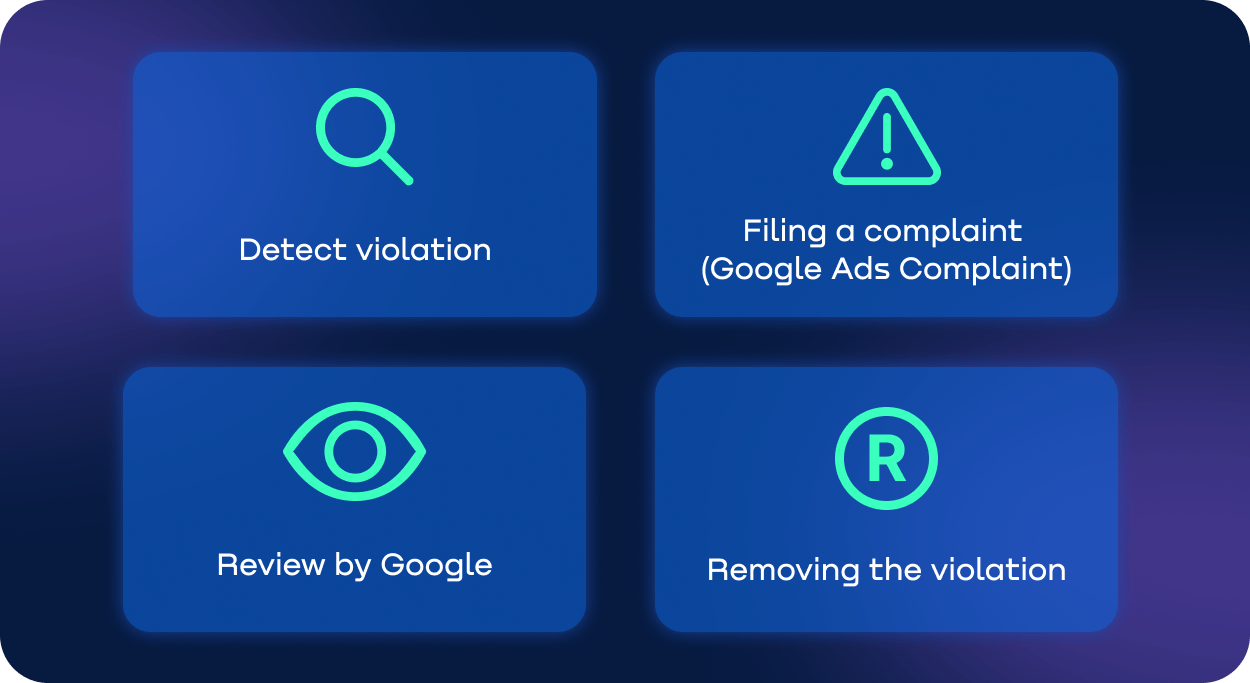
Contents
A competitor suddenly uses your brand name in online ads. Potential customers see confusingly similar offers and wonder if they’re from you. These scenarios spark trademark disputes and can escalate into trademark litigation. The stakes are high: loss of customer trust, diluted brand value, and serious legal costs. Protecting your brand isn’t just about legal theory, it’s about practical strategies any marketer or business owner can deploy.
What Are Trademark Disputes and Litigation?
Trademark disputes arise when one party believes another has infringed its registered brand assets. Often, these conflicts turn into trademark litigation if a cease-and-desist goes ignored. Trademark enforcement involves legal action to defend ownership rights. Courts look at potential consumer confusion, how a mark is used, and whether there’s harm to the original brand’s reputation. At their core, trademark disputes revolve around recognition and protection of your brand identity.
For instance, if you own a trademark for a product name, but a competitor starts using a nearly identical term in online marketing, that could trigger a conflict. In one well-known case, Starbucks sued a smaller coffee chain that launched a “Freddocino,” arguing it infringed on their famous “Frappuccino” trademark.
The dispute was resolved by forcing the competitor to change the product name. When negotiations fail, litigation becomes a last resort, an expensive but powerful means to stop others from riding on your reputation or diluting your brand’s distinctiveness.
Trademark in Ad Text: Infringement or Not?
When does trademark in ad text cross the line from fair use to infringement? Generally, referencing a competitor’s brand name in ads might be permissible if it’s done to compare products or services objectively. However, it becomes problematic if the ad misleads users into thinking the competitor is affiliated with you. Consider these quick checks before including any trademark in ad text:
• Are you accurately comparing your product to the trademarked brand, without implying an endorsement?
• Do you clearly show that your brand is distinct?
Failing these tests can spark trademark disputes if a brand owner sees potential confusion. Keep your wording precise and your motives transparent to minimize legal risks.
How to File a Trademark Complaint on Google Ads?
When you suspect infringement, you might wonder how to report trademark infringement effectively. Filing a Google Ads Trademark Complaint is a direct way to address unauthorized usage. Here is a straightforward approach:
Collect Evidence
• Screenshots of ads using your trademark
• URLs where the ads appear
• Registration documents for your trademark
Complete the Complaint Form
• Visit the Google Ads support page
• Look for the “Google Ads Trademark Complaint” link
• Provide accurate details of the infringement
Await Review
• Google may ask for additional proof
• If your complaint is denied, double-check your documentation and refile
If your brand faced illegal usage, learn more about trademark infringement and the steps you can take to protect your rights. Meanwhile, ensure you’ve gathered all relevant evidence before submitting google ads complaints to avoid back-and-forth delays.

How to Protect Your Website Brand?
Online threats aren’t limited to ads. Website brand protection is equally critical. Automating the process with monitoring tools can help detect suspicious domains or unauthorized uses of your logo. This proactive strategy is part of broader brand and trademark protection efforts.
If you find a site mimicking your brand or promoting fake products, gather evidence (screenshots, domain info) and initiate contact with the site owner or hosting provider. This often deters continued infringement. Website brand protection is not a one-time event; it requires continuous monitoring and swift action when violations surface.
What If Competitors Use Your Trademark?
Some competitors might deliberately become a trademark violator. Others may claim “fair use.” Either way, prompt action is essential. If someone is blatantly infringing, consider the following steps:
• Send an Official Notice
Politely but firmly request they stop using your mark and warn of potential legal consequences.
• Escalate if Necessary
If your letters go unanswered, you might need to initiate trademark litigation.
• Watch for Fraud
In extreme cases, unauthorized use of your brand may also point to Google ad fraud.
Proactive measures, like registering your marks globally and tracking how competitors advertise, minimize the odds you’ll face a serious trademark violator. This diligence also helps prevent trademark disputes before they escalate.
How to Minimize Risks?
Reducing risk in trademark disputes and trademark litigation boils down to vigilance, quick action, and clear branding strategies. Simple steps, like monitoring competitors’ ads, registering marks in multiple jurisdictions, and educating your team, can go a long way. Keep detailed records and never ignore warning signs of infringement.
• Maintain accurate trademark registrations
• Monitor ads and websites regularly
• Act swiftly when you spot issues
These measures limit brand damage and legal headaches.

